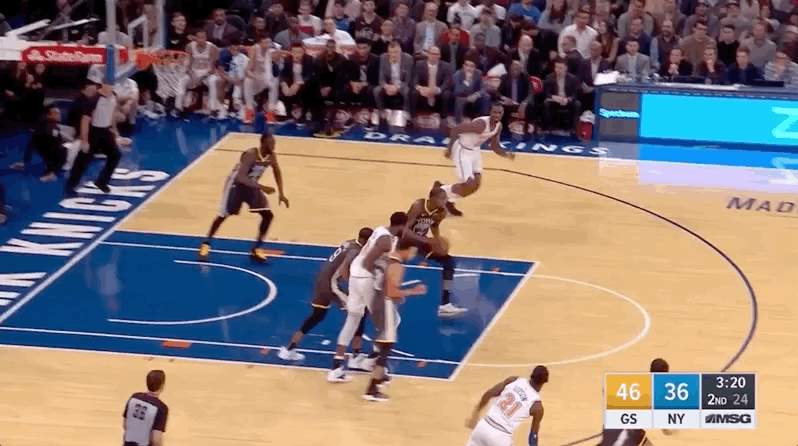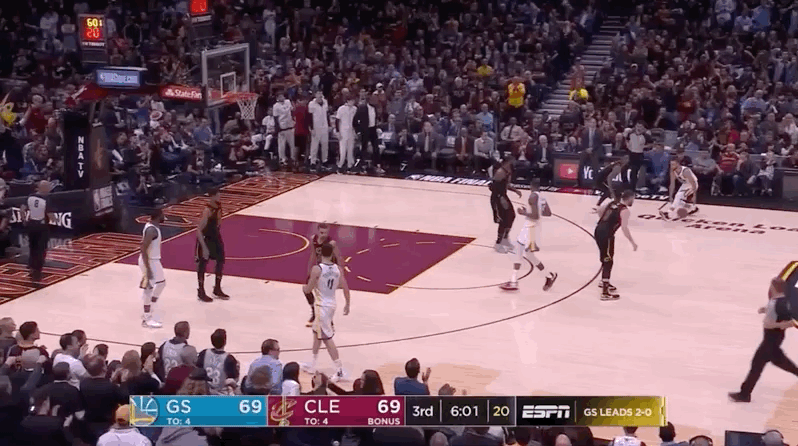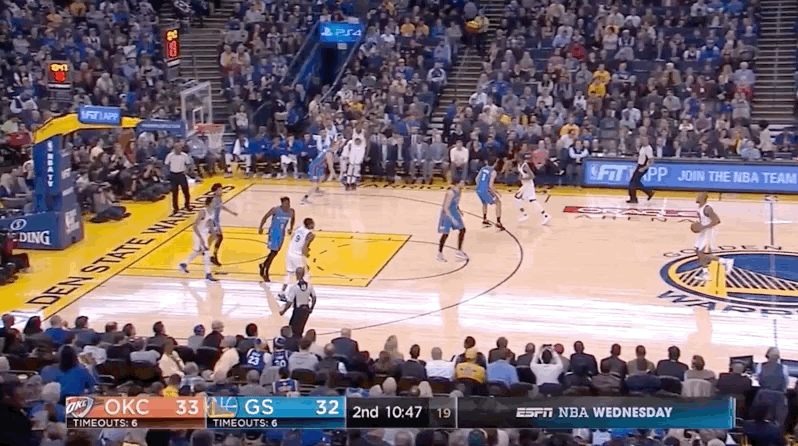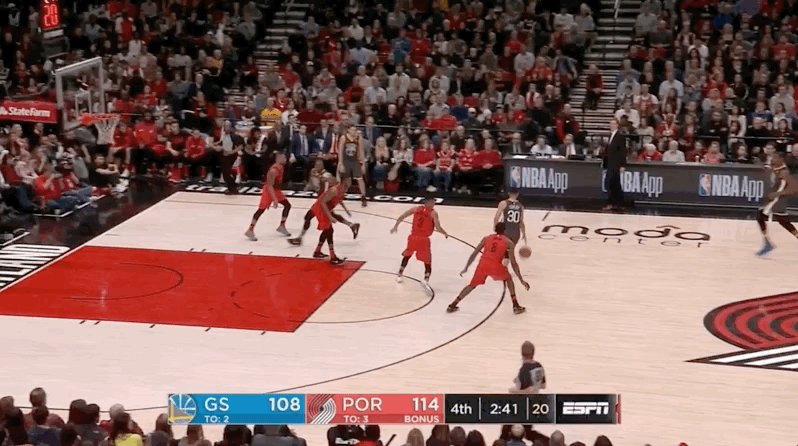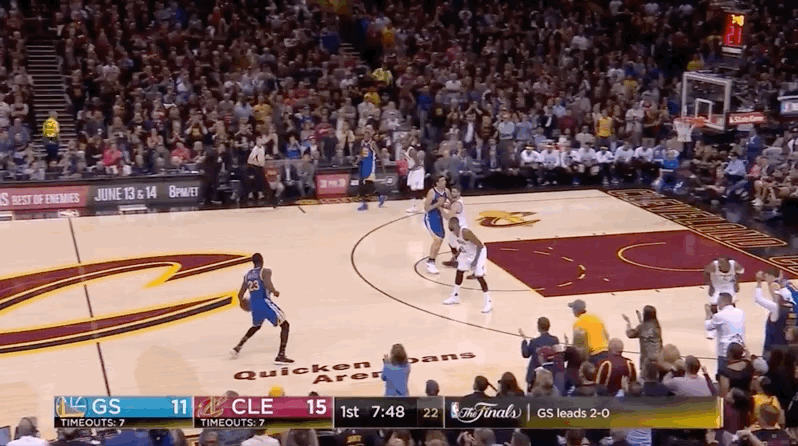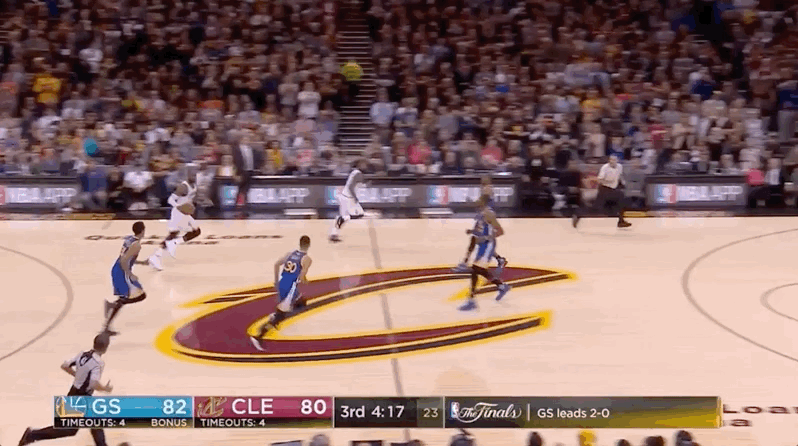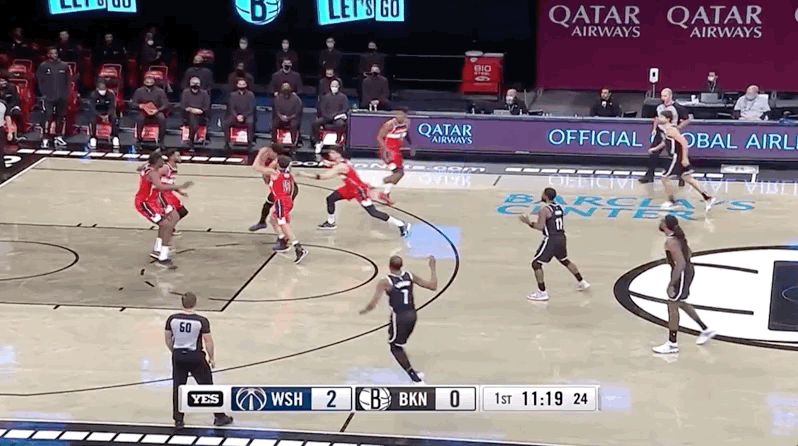Hesi Pull-Up Jimbo: Kevin Durant Analysis

On the 10th of June 2019, in Game 5 of the NBA Finals, Kevin Durant ruptured his Achilles tendon. That devastating injury caused the player then considered by many as the best in the world, to miss all of last season.
Since Durant last played in a competitive NBA game, the Toronto Raptors won an NBA Championship; there’s been an NBA Draft; KD changed teams; that team fired their coach; that team hired a new coach; there’s been a global pandemic; the NBA shut down; the NBA restarted in Disney World; the Los Angeles Lakers won an NBA Championship; there’s been another NBA Draft; and a whole host of other things that are far too depressing to mention.
The point is – Kevin Durant hasn’t played a meaningful game of basketball in a very long time, but he has looked fantastic in preseason this year. He seems to be picking up where he left off.
In the season that culminated in his injury, Durant was averaging 26 points, 6 and a half rebounds and just under 6 assists per game, on 52% shooting from the floor and 35% from three. He was an All-Star for the 10th straight year and was named to the All-NBA Second Team.
His efficiency is almost unparalleled for a small forward in the NBA, and-oh my goodness, he’s how tall? And he can do that with the ball in his hands?
KD’s height is his natural advantage. The Nets have him listed at 6’10, but he’s almost certainly 7-feet tall. This allows him to shoot easily over any defender.
This also helped Durant become the best mid-range shooter in the entire NBA. He took the third most mid-range shots in the league in 2018-19, hitting 55.1% of them (for context, the second highest mid-range field goal percentage that season was Kawhi Leonard’s 45.9%). It also explains why he’s an elite isolation scorer. Durant averaged 1.06 points per isolation possession in 2018-19, shooting 46.2%.
Due to his height, Durant’s pull-up jumper is almost unguardable – he shot 46.7% on these in 2018-19. His long strides eat up the floor in front of him, before letting him stop on a dime, rise and fire – usually from three (he attempted over two and a half pull-up threes per game in 2018-19). Here, his textbook footwork (stepping into the shot with his left foot first) quickly gets him into his shooting motion, and his high release point makes the shot impossible to block.
In fact, the pull-up three pointer gave us possibly the most iconic shot of KD’s career. With his team down two with 52 seconds left in Game 3 of the 2017 Finals, Durant gathered a rebound, brought the ball up the court and hit a pull-up three right over LeBron James.
Durant’s turnaround jump shot from the post is another beneficiary of his high release point, and in 2018-19 he scored 52.1% of the time when posting up - which again, showcases his incredible efficiency. Steve Kerr often ran cross screens for Durant, with Steph Curry as the screener, to get him in position on either block.
Durant’s post-up game also displays another important part of his offensive arsenal – his balance and footwork (which, honestly, could be talked about for hours because they’re both so impressive, but that’s for another time).
This shot against the Clippers encapsulates that arsenal. He backs down Garrett Temple after catching the ball in the mid post, then turns over his left shoulder, quickly rises and shoots. He maintains his balance despite being fouled, and hits the shot.
Durant’s height and footwork will help him regain his rhythm post-injury. Even in Game 5 of the 2019 Finals, when he was obviously playing hurt, KD never lost his jump shot – here he comes around the screen and steps into a trademark pull-up three.
In the preseason game against Washington, Durant proved his ability to shoot over the opposition is still there – again catching the ball in the mid-post, then turning and facing up his defender, before hitting nothing but net.
Despite his 7-foot frame, Durant’s ball handling is superb. Here he uses his crossover to get the defender leaning to one side, as he moves the ball into his left hand. This creates a driving lane for KD, which he uses, before pulling up and hitting the push shot.
Although not among the league leaders in drives attempted per game in 2018-19, Durant was still, unsurprisingly, one of the league’s most efficient scorers when doing so. He shot 53.6% on his 7.5 attempted drives per game.
His first step is deceptively quick for a man of his size. Here, LeBron James is rushing to close down the open three, but because of this, Durant’s first step off his right foot puts LeBron on his heels. It allows him to blow past James for the dunk.
His long legs actually often help, rather than hinder, on drives, and his fantastic touch enables him to finish at the rim superbly. Because of his length, on this drive he’s able to gather the ball early, before taking some Stilt-Man-esque strides in his euro step. He gets right to the rim, and softly lays the ball up and in with his right hand.
Durant can also finish through contact and has incredible body control for someone who appears so slight. Here, the much bigger defender crashes into him in the air when he cuts to the hoop. He absorbs the hit, and those long arms come to his rescue – helping him put the ball in off the glass.
He often starts his drives with a little hop step hesitation move, before leaving his defender stranded as he bursts towards the basket. Here he gives his man a between the legs dribble, then steps into the hop with his left foot and drives – and even if there were defenders in the restricted area, it probably wouldn’t have made much of a difference.
Because of his ball handling, Durant is a more than competent playmaker. His height ensures he sees, and makes, passes shorter players wouldn’t be able to. In 2018-19, he averaged the most assists per game of his entire career, just under six, showing his ability as a passer. But assist accumulation is made easier when passing to Steph Curry, the selfless superstar who’s arguably the greatest off-ball threat the NBA has ever seen.
Rather than force a bad shot, KD is more than willing to pass when doubled in the post. Here, after peering over the defense, he makes the simple pass as soon as he spots the open man.
Durant can also run the two-man game proficiently. He averaged 0.98 points per pick and roll possession in 2018-19, on 46% shooting. If the defender drops on the screen, Durant can use that space to shoot. If the defense blitzes him, he can keep the ball and drive to the hoop, or make the pass to the roll man for an easy score.
Additionally, Brooklyn’s preseason game against the Wizards revealed the Nets may run the pick and roll, or pick and pop, with KD and Kyrie Irving this year – a potentially deadly combination for opposing defenses.
What makes Kevin Durant such a special offensive player is that he’s still dangerous without the ball. He’s no Steph Curry, whose constant off-ball motion sends defenses into a floor spacing induced panic, but KD can run off screens to cut and drive, or catch and shoot – Durant shot 51.8% off screens in 2018-19 (second best in the NBA among players who attempted to do so at least twice a game). Kerr used this to his advantage, running various pin downs and side screens to get him opportunities to score.
This is a simple catch and shoot situation, but his height and perfect footwork, again, give him more than enough space to get his shot away.
Here, Durant is strong enough to hold off Kawhi Leonard before coming off Motion Strong for an open jump shot, all in one fluid motion.
Here, a Zipper cut from the right-hand side of the floor lets him catch the ball at the lane line – and at that point there’s not much else the defender can do besides foul him. That’s good news for Durant, as he makes 88.3% of his free-throws.
The Warriors would often look for Durant in transition, especially when he was the trailer – something the Dallas Mavericks constantly did with Dirk Nowitzki – as he can pull-up and shoot above the break threes effortlessly. He shot 40.8% on catch and shoot threes and 36.4% on all above the break threes (by far his favourite area beyond the arc) in 2018-19.
Durant also knows when to slip to the rim after bumping his defender, instead of curling around the screen. Here he sees the paint is empty, rejects the pin down, and slips to the basket for the lob.
Here he does something similar, with the sharp stop and change of direction forcing a confused defense to switch, presenting him with enough space in which to gather the pass and score.
Durant was one of the better defenders in the NBA before his injury, and his length was again his biggest advantage on that side of the court. He’s switchable, can recover when he’s beaten off the dribble, and of course, his long arms help contest shots. He’s also a great rebounder, averaging over six per game for his career. But what stands out (and is useful in today’s ‘position-less’ NBA) is his ability to protect the rim.
Despite Draymond Green usually defending the opposition’s center in Golden State’s Hamptons Five line-up, Durant was often the lowest man on defense, especially against five-out offenses. As such, he did a fantastic job of rotating, and then disrupting or blocking shots – in 2018-19 he had the most blocks per game in the NBA among players not power forwards or centers.
Here, Gallinari gets past Green on the perimeter, but his attempt is met at the rim by the long arms of Durant, who timed his jump perfectly to meet the ball at the apex of the shot.
Here, it’s simply KD’s presence that forces Lou Williams to commit a vertical intimidation based turnover – there’s no way he can get the ball up and over Durant’s arm.
But even with Durant’s defensive prowess, he still finds himself overpowered by other players at times. Here, despite KD staying in front of Kevin Love on his drive, one shove from the Cavs’ big man offers enough space to get underneath the rim.
And here, LeBron barely notices Durant’s hands on his drive towards the hoop.
Durant’s advanced defensive metrics have slowly gone down as his career has progressed. In 2018-19, Durant had the fourth lowest Defensive Win Shares and Defensive Box Plus Minus numbers of his career, at 2.9 and 0.1 respectively. Don’t expect these to improve as a part of a Brooklyn Nets team that is already surrounded by defensive question marks.
However, he’s still an all-time great with some historic advanced statistics. He has the third highest PER among active players (eighth all time) at 25.2; the sixth highest True Shooting Percentage among active players (11th all time) at 61.2%; the fifth highest Box Plus/Minus among active players (10th all time) at 6.74; and the second highest Offensive Box Plus/Minus among active players (third all time) at 6.01.
Kevin Durant has shown he can be the best player in the world. Admittedly, that was almost two years ago, and of course, this season he has a rookie head coach and new teammates to work with. It’ll also be interesting to see how well he meshes with Kyrie. But judging by the preseason, and both their abilities to work off the ball, it seems they can coexist in the same offense.
Even if Durant loses some of his athleticism, he’s still an All-Star level scoring threat. His height, touch, post-up game and long-legged strides provide him with multiple outlets to pile up the points. And if his first step is somewhat diminished, he’s still got that pull-up jump shot.
But his right leg seems to have healed just fine.












